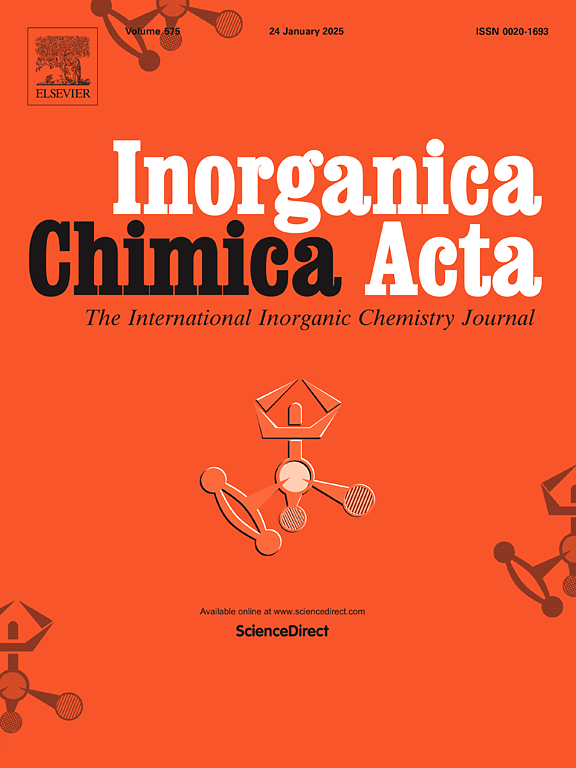Trinuclear rhenium bromide cluster Re3Br9 as a product of thermal decomposition of Re3I3Br6 and a precursor for Re(CO)5Br
IF 2.7
3区 化学
Q2 CHEMISTRY, INORGANIC & NUCLEAR
引用次数: 0
Abstract
The heating of Re3I3Br6 up to 450 °C led to the formation of Re3Br9. Carbonylation of Re3Br9 with HCOOH at 130°С in concentrated HBr leads to the formation of Re(CO)5Br in a good yield. The formation of Re3Br9 and Re(CO)5Br was confirmed by single crystal X-ray diffraction analysis. The cluster phase Re3Br9 was characterized by powder X-ray diffraction analysis and energy-dispersive spectroscopy. Re(CO)5Br was additionally identified by energy-dispersive spectroscopy and Raman spectroscopy. New structures have been determined for an aquation product of Re3Br9, [Re3Br9(H2O)3]·3Et2O, and for (PyH)2ReBr6, which was obtained as pyridinium by extraction with HBr of a by-product of the thermal decomposition of Re3I3Br6. Re3I3Br6 was characterized by thermogravimetric analysis.

三核溴化铼簇Re3Br9是Re3I3Br6热分解产物和Re(CO)5Br前体
将Re3I3Br6加热至450℃,形成Re3Br9。Re3Br9在浓HBr中与HCOOH在130°С下羰基化,生成Re(CO)5Br,产率较高。单晶x射线衍射分析证实了Re3Br9和Re(CO)5Br的形成。通过粉末x射线衍射分析和能量色散光谱对簇相Re3Br9进行了表征。利用能量色散光谱和拉曼光谱对Re(CO)5Br进行了鉴定。Re3Br9的水化产物[Re3Br9(H2O)3]·3Et2O和Re3I3Br6热分解副产物(PyH)2ReBr6用HBr萃取得到吡啶,发现了新的结构。Re3I3Br6通过热重分析进行了表征。
本文章由计算机程序翻译,如有差异,请以英文原文为准。
求助全文
约1分钟内获得全文
求助全文
来源期刊

Inorganica Chimica Acta
化学-无机化学与核化学
CiteScore
6.00
自引率
3.60%
发文量
440
审稿时长
35 days
期刊介绍:
Inorganica Chimica Acta is an established international forum for all aspects of advanced Inorganic Chemistry. Original papers of high scientific level and interest are published in the form of Articles and Reviews.
Topics covered include:
• chemistry of the main group elements and the d- and f-block metals, including the synthesis, characterization and reactivity of coordination, organometallic, biomimetic, supramolecular coordination compounds, including associated computational studies;
• synthesis, physico-chemical properties, applications of molecule-based nano-scaled clusters and nanomaterials designed using the principles of coordination chemistry, as well as coordination polymers (CPs), metal-organic frameworks (MOFs), metal-organic polyhedra (MPOs);
• reaction mechanisms and physico-chemical investigations computational studies of metalloenzymes and their models;
• applications of inorganic compounds, metallodrugs and molecule-based materials.
Papers composed primarily of structural reports will typically not be considered for publication.
 求助内容:
求助内容: 应助结果提醒方式:
应助结果提醒方式:


